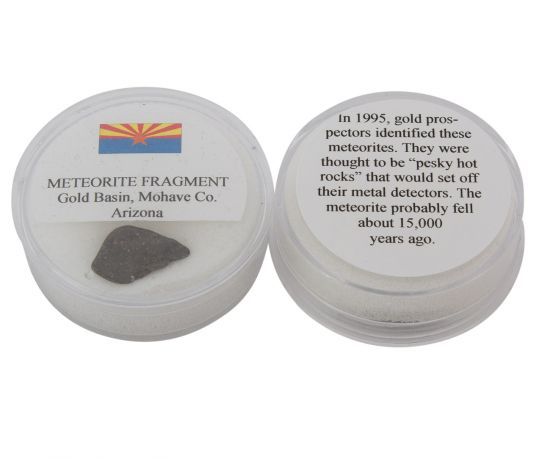We use cookies to make your experience better.
Meteorite from Gold Basin Mohave / Arizona USA (1995 and therefore fairly recent)
A meteorite is the part of a meteoroid impinges after it on the earth from space to have fallen through the atmosphere. During the trip through the atmosphere, the material is greatly slowed and very hot; this can be seen as a meteor. Essentially, a meteorite debris from space. On the basis of the composition of meteorites can sometimes be determined what the source is. For example, there are already more than twenty were found which are derived from the moon. This refers to material that another meteorite from the moon's out of control. There are also meteorites, such as ALH84001 found whose origin is Mars. In many cases, however, the meteorite came from the asteroid belt (also called asteroid belt) between Mars and Jupiter. Whether there meteorites consist of a cometary origin, is still under discussion. It is possible that some rare and very fragile species of carbonaceous meteorites of short-period comets originate. A lot of debris that comes in contact with the atmosphere does not reach the earth, but burns by the resistance of the atmosphere. The fragments that burn in the night visible as meteors, also called star rain or shooting star. For larger items that do not completely burn only partially as meteorites land on Earth, occurs when passing the atmosphere a bolide (fireball). That it can be an impressive phenomenon is apparent in the car of the Sikhote-Alin. That was very visible in full daylight. The fireball caused by the Dutch Glanerbrug meteorite from April 1990, just before sunset was visible.
Mohave of Mojave (Mojave: 'Aha Makhav) are native inhabitants of the Mojave Desert in the United States. This desert and thus the former Mojave habitat cover parts of the states of California, Arizona and Nevada, around the Colorado. The current reserve is partly in California and further in Arizona and is shared with other tribes, including the Chemehuevi, the Hopi and the Navajo. The tribal headquarters, where there is also a library and museum, is located in Parker, Arizona.












